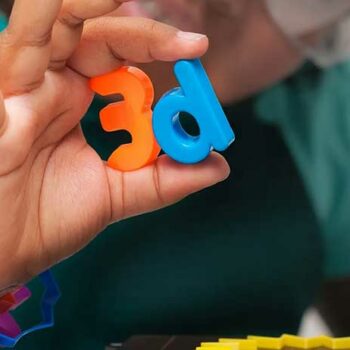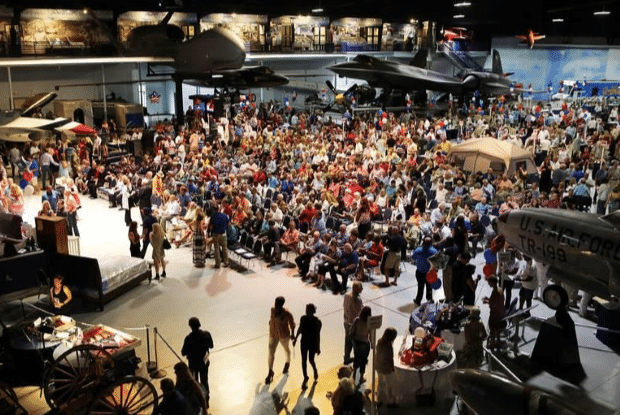This is perhaps a little off topic for an Air Force museum, but nonetheless my thoughts today are on the historic landing of NASA’s Curiosity rover on Mars early this morning. I, along with many other interested people, were all glued to our respective TV screens, computer monitors and twitter feeds today around 1:30 AM in the Eastern Time Zone. The technical details of the mission are nothing short of amazing and you can read more about them here.

Artist’s concept of Mars Science Laboratory entry, descent and landing. Image credit: NASA/JPL-Caltech
Watching the landing last night live was quite surreal. There I was in the comfort of my home, literally millions of miles from the slopes of Mount Sharp as the landing took place, patiently waiting on the signal of its success or failure to reach Earth. I thought back to so many famous moments in space exploration in the past. What were people’s thoughts when they heard about Sputnik, Apollo 11 and so on? In looking back at those events and others, it is interesting to think how Curiosity and its mission might change the world, change technology and shape the future of space exploration.

A United Launch Alliance Atlas V rocket lifts off from Space Launch Complex 41 at Cape Canaveral Air Force Station carrying NASA’s Mars Science Lab (MSL) spacecraft. Liftoff came right on time on the first opportunity at 10:02 a.m. EST, Nov. 26, 2011. Image credit: NASA/George Roberts
NASA is an agency that is changing as well. Gone are the high profile space shuttles; the astronauts that gave its missions a face and more transparent human value are now riding Russian rockets into space. It has been interesting to me as a casual observer to see how the agency, its employees and astronauts have handled this transition. I was struck last night by all of the young faces in the control room and all of the expressions of youthful joy upon the announcement of the successful landing of Curiosity. Social media has been openly embraced by NASA as a way to reach new minds. Curiosity even has its own twitter account (@MarsCuriosity for those interested), where it posted progress reports of its descent, landing and even its first picture from the surface of Mars. The Curiosity twitter account is undoubtedly run by a NASA public relations representative holed up somewhere here on good old Earth, but it is easy to imagine Curiosity happily tweeting its little computer heart out, proud to be our robot on Mars. Thanks to NASA’s personification of Curiosity through Twitter, space exploration is getting personal again.

This is one of the first images taken by NASA’s Curiosity rover, which landed on Mars the evening of Aug. 5 PDT (morning of Aug. 6 EDT). It was taken through a “fisheye” wide-angle lens on the left “eye” of a stereo pair of Hazard-Avoidance cameras on the left-rear side of the rover. The image is one-half of full resolution. The clear dust cover that protected the camera during landing has been sprung open. Part of the spring that released the dust cover can be seen at the bottom right, near the rover’s wheel.
– Arthur Sullivan, Assistant Curator











